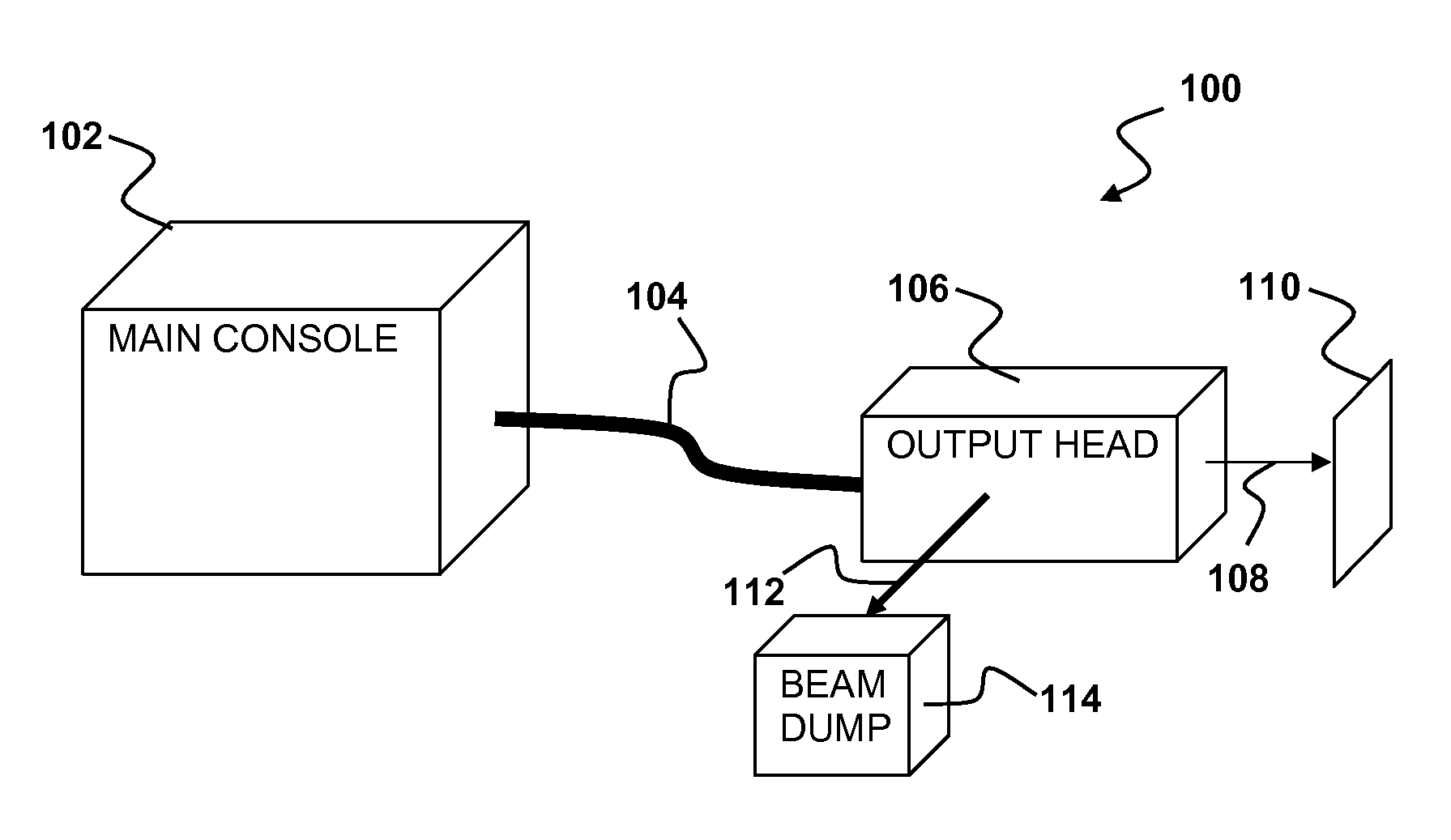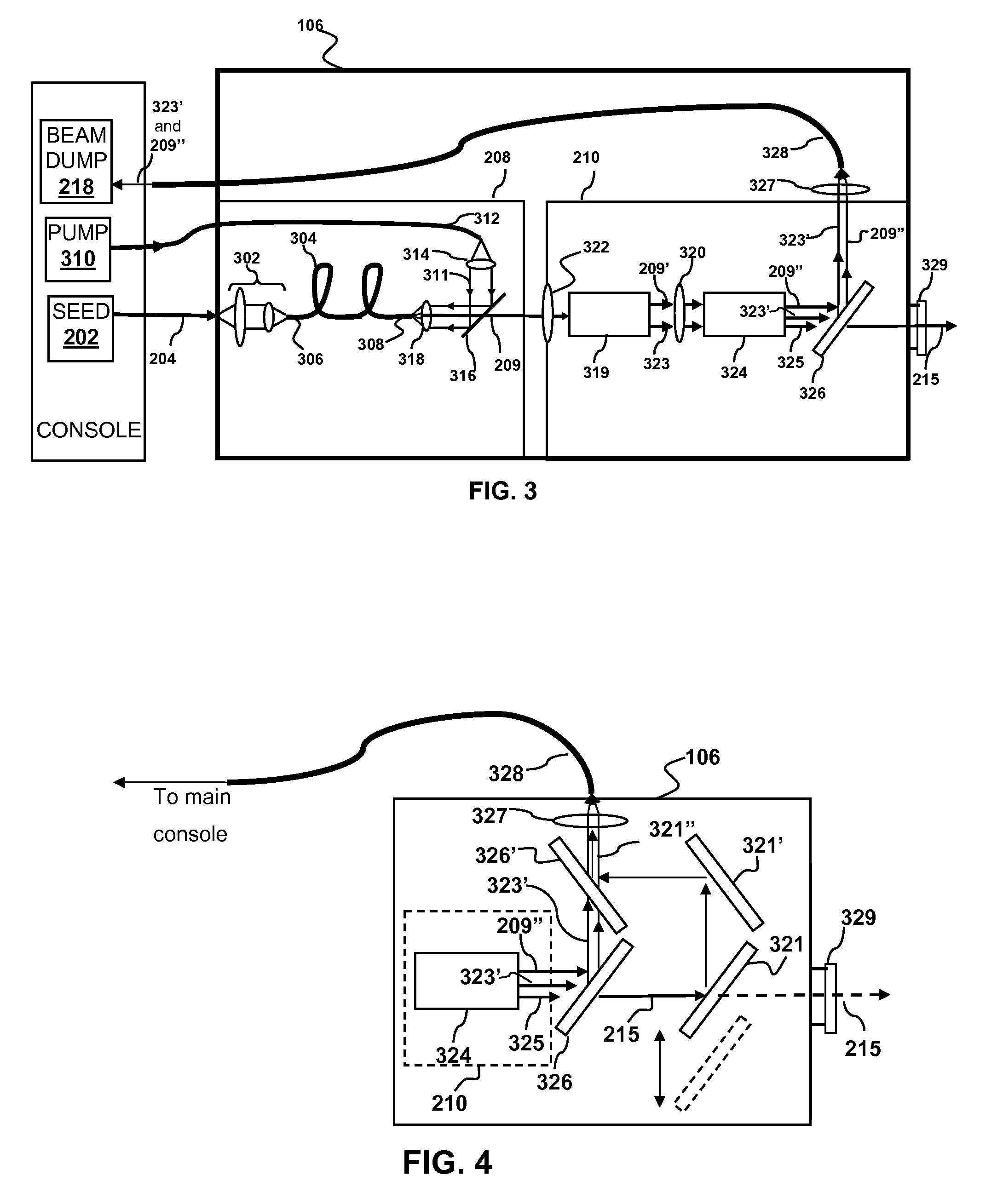Reducing thermal load on optical head
a technology of thermal load and optical head, applied in the field of lasers and optical amplifiers, can solve the problems of unconverted input light remaining as waste light, waste light contributing to undesirable build-up of heat in the optical system, adversely affecting the performance of the optical system, etc., and achieves the effect of reducing the fluence level of waste light, avoiding damage, and significantly reducing thermal load on the optical head
- Summary
- Abstract
- Description
- Claims
- Application Information
AI Technical Summary
Benefits of technology
Problems solved by technology
Method used
Image
Examples
Embodiment Construction
[0013]Although the following detailed description contains many specific details for the purposes of illustration, anyone of ordinary skill in the art will appreciate that many variations and alterations to the following details are within the scope of the invention. Accordingly, the exemplary embodiments of the invention described below are set forth without any loss of generality to, and without imposing limitations upon, the claimed invention.
GLOSSARY
[0014]As used herein:
[0015]The indefinite article “A”, or “An” refers to a quantity of one or more of the item following the article, except where expressly stated otherwise.
[0016]Beam splitter refers to an optical device capable of splitting a beam of light into two or more parts.
[0017]Brillouin scattering refers to a nonlinear optical phenomenon involving spontaneous scattering of light in a medium due to interaction between the light and sound waves passing through the medium.
[0018]Cavity or Optically Resonant Cavity refers to an ...
PUM
| Property | Measurement | Unit |
|---|---|---|
| power | aaaaa | aaaaa |
| vacuum wavelength | aaaaa | aaaaa |
| vacuum wavelength | aaaaa | aaaaa |
Abstract
Description
Claims
Application Information
 Login to View More
Login to View More - R&D
- Intellectual Property
- Life Sciences
- Materials
- Tech Scout
- Unparalleled Data Quality
- Higher Quality Content
- 60% Fewer Hallucinations
Browse by: Latest US Patents, China's latest patents, Technical Efficacy Thesaurus, Application Domain, Technology Topic, Popular Technical Reports.
© 2025 PatSnap. All rights reserved.Legal|Privacy policy|Modern Slavery Act Transparency Statement|Sitemap|About US| Contact US: help@patsnap.com



